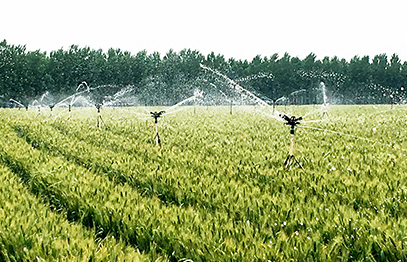Sep . 10, 2024 10:19 Back to list
Deep Submersible Well Pumps - High Efficiency & Reliable Water Solutions
The Deep Submersible Well Pump An Overview
Deep submersible well pumps are sophisticated devices used for extracting groundwater from considerable depths. These pumps are engineered to operate underwater, making them particularly well-suited for deep wells. They play a crucial role in various applications, including agricultural irrigation, municipal water supply, and industrial processes. By understanding their construction, operation, and benefits, we can appreciate the significance of deep submersible pumps in modern water management.
Construction
A deep submersible well pump typically consists of several essential components a motor, a pump, and a series of impellers. The motor is designed to operate underwater, making it inherently different from surface pumps. It is hermetically sealed to prevent water from entering, ensuring longevity and reliability. The motor drives the pump, which lifts water through a vertical column of piping known as a discharge head.
The impellers are critical for creating the necessary pressure to push water to the surface. Each impeller transfers kinetic energy to the water, and as the water moves through successive impellers, it gains additional energy. This multi-stage design allows the pump to handle significant depths, sometimes exceeding hundreds of feet.
Operation
The operation of a deep submersible well pump is relatively straightforward. When turned on, the electric motor activates the impellers, initiating the movement of water from the aquifer. The water enters the pump through intake screens, which filter out debris and particles, ensuring that only clean water is drawn in. The movement of the impellers creates a pressure differential that forces water upward through the discharge pipe.
deep submersible well pump

Since these pumps are submerged, they do not require any priming or additional setups typically associated with surface pumps. This self-priming feature, combined with their ability to operate in high demand situations, makes deep submersible pumps a preferred choice for many applications.
Benefits
Deep submersible wells offer numerous advantages over traditional pumps. One of the primary benefits is efficiency. These pumps can operate at greater depths, significantly increasing the amount of water that can be extracted compared to shallow wells or surface pumps. They also consume less power, leading to lower operational costs over time.
Furthermore, deep submersible pumps are known for their durability. Constructed from high-quality materials resistant to corrosion and wear, they can withstand the harsh conditions often found in deep aquifers. Advances in technology have also led to improvements in their performance, such as variable frequency drives (VFDs), which allow for better energy management and flow control.
Conclusion
In summary, deep submersible well pumps are essential tools in modern water extraction strategies, offering efficiency, durability, and effectiveness. As our demand for fresh water continues to rise, these pumps will play an increasingly important role in sustainable water management practices. With ongoing advancements in technology, the deep submersible well pump will likely evolve, providing even greater solutions to the challenges faced in groundwater sourcing and management. As a result, they stand as a testament to engineering innovation that addresses fundamental human needs.
-
Submersible Well Pumps Buying Guide
NewsMay.14,2025
-
Submersible Sump, Dirty Water, Borehole Pumps Demystified
NewsMay.14,2025
-
Stainless Steel Submersible Pumps Superior Performance
NewsMay.14,2025
-
High Flow Submersible Well Pumps Essential Features
NewsMay.14,2025
-
Choosing the Best Stainless Well Pump
NewsMay.14,2025
-
A Comparison of Submersible Pumps Filled with Water and Oil
NewsMay.14,2025
-
 Submersible Well Pumps Buying GuideReliable access to clean water is fundamental for residential, agricultural, and commercial operations, making the selection of an appropriate well pump system one of the most important infrastructure decisions.Detail
Submersible Well Pumps Buying GuideReliable access to clean water is fundamental for residential, agricultural, and commercial operations, making the selection of an appropriate well pump system one of the most important infrastructure decisions.Detail -
 Submersible Sump, Dirty Water, Borehole Pumps DemystifiedThe world of water management has undergone a technological revolution, with advanced pumping systems now offering unprecedented efficiency and reliability across diverse applications.Detail
Submersible Sump, Dirty Water, Borehole Pumps DemystifiedThe world of water management has undergone a technological revolution, with advanced pumping systems now offering unprecedented efficiency and reliability across diverse applications.Detail -
 Stainless Steel Submersible Pumps Superior PerformanceModern water extraction and fluid handling systems demand equipment capable of withstanding harsh environments while maintaining peak efficiency.Detail
Stainless Steel Submersible Pumps Superior PerformanceModern water extraction and fluid handling systems demand equipment capable of withstanding harsh environments while maintaining peak efficiency.Detail
